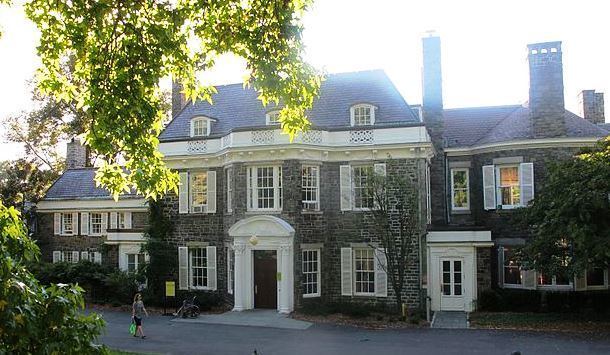Built 1843 Area 8 ha Phone +1 718-549-3200 | NRHP Reference # 83001646 Opened 1843 Added to NRHP 9 September 1983 | |
 | ||
Location 675 W. 252nd St., Bronx, New York Address 649 W 249th St, Bronx, NY 10471, USA Hours Open today · 9AM–5:30PMSunday9AM–5:30PMMondayClosedTuesday9AM–5:30PMWednesday9AM–5:30PMThursday9AM–5:30PMFriday9AM–5:30PMSaturday9AM–5:30PMSuggest an edit Architectural styles Colonial Revival architecture, Greek Revival architecture Similar Van Cortlandt Park, Pelham Bay Park, Edgar Allan Poe Cottage, New York Botanical Garden, Bronx Museum of the Arts Profiles | ||
Karungkarni band gurindji man
Wave Hill is a 28-acre (11 ha) estate in the Hudson Hill section of Riverdale, Bronx, in New York City. Wave Hill currently consists of public horticultural gardens and a cultural center, all situated on the slopes overlooking the Hudson River, with expansive views across the river to the New Jersey Palisades. Listed on the National Register of Historic Places, the estate includes two houses and a botanical garden. The oldest part of the main house, Wave Hill House, dates back to 1843; Glyndor House dates from 1927 and contains a multi-room art gallery. Perkins Visitor Center, which was originally a garage, contains a gift shop and an information desk.
Contents
During the late 19th century and early 20th century, numerous highly notable people resided in Wave Hill, either because they owned it, leased it, or stayed there as guests. In 1960, the estate was given to the City of New York, and Wave Hill is now a cultural center as well as a garden. In addition to the free, constantly changing, contemporary visual arts exhibits that are on display in the Glyndor Gallery within Glyndor House, paid-ticket concert series take place on some Sunday afternoons in Armor Hall, featuring music that includes such styles as chamber music and jazz.
Wave hill
History
The original Wave Hill House was a gray fieldstone mansion built in 1843 by lawyer William Lewis Morris. It was owned from 1866 to 1903 by publisher William Henry Appleton, who enlarged the house in between 1866 and 1869 and again in 1890, and added greenhouses and gardens to the grounds. During these years, the house was visited by Thomas Henry Huxley, who helped Charles Darwin bring evolution by natural selection to the public's attention. Theodore Roosevelt's family rented Wave Hill during the summers of 1870 and 1871, and Mark Twain leased it from 1901 to 1903.
The house was purchased in 1903 by George Walbridge Perkins, a partner of J. P. Morgan, along with adjacent property, including Glyndor, a house built by the Harriman family in 1888, which later burned down and was rebuilt in 1927. In 1910, Perkins added an underground building for recreation which included a bowling alley. Perkins performed extensive landscaping on the site and leased Wave Hill House to an eminent ichthyologist, Bashford Dean of the American Museum of Natural History, who built a stone addition to the building as a private museum, Armor Hall.
Other famous residents of the estate included the conductor Arturo Toscanini (1942–1945) and chief members of the British Delegation to the United Nations (1950–1956). In 1960, at the suggestion of Robert Moses, the Perkins-Freeman family deeded Wave Hill to the City of New York. In 1983, the estate was added to the roster of the National Register of Historic Places. Before 1987, the estate was known as Perkins Garden. During that year, Parks Commissioner Henry Stern renamed it, Wave Hill.
In 2005, Wave Hill was among 406 New York City arts and social service institutions to receive part of a $20 million grant from the Carnegie Corporation, which was made possible through a donation by New York City mayor Michael Bloomberg.
On an annual basis, about 65,000 people visit Wave Hill, making it one of the most popular sites in Riverdale.
Gardens
The special features of Wave Hill's gardens include:
Shop
The Shop contains gifts from local artists that reflects Wave Hill's mission of connecting people with nature, such as educational toys, hand-crafted soaps, naturally inspired ceramics, glass and jewelry, seasonal plants, garden products, and local honey, including honey from Wave Hill's own hives.
